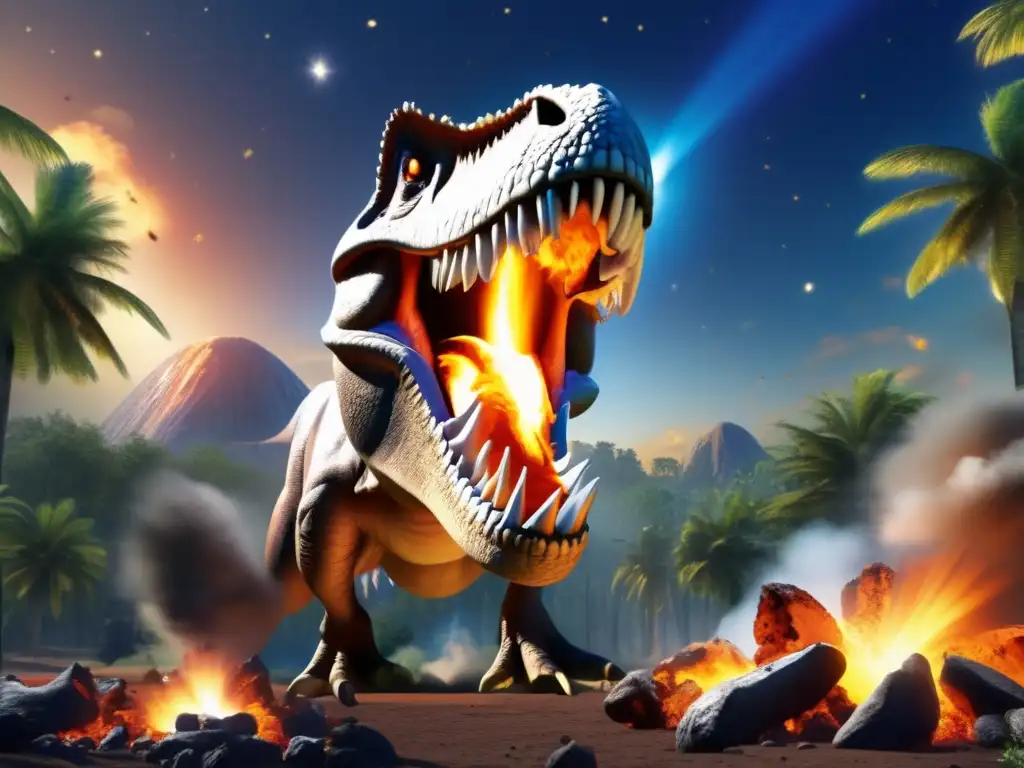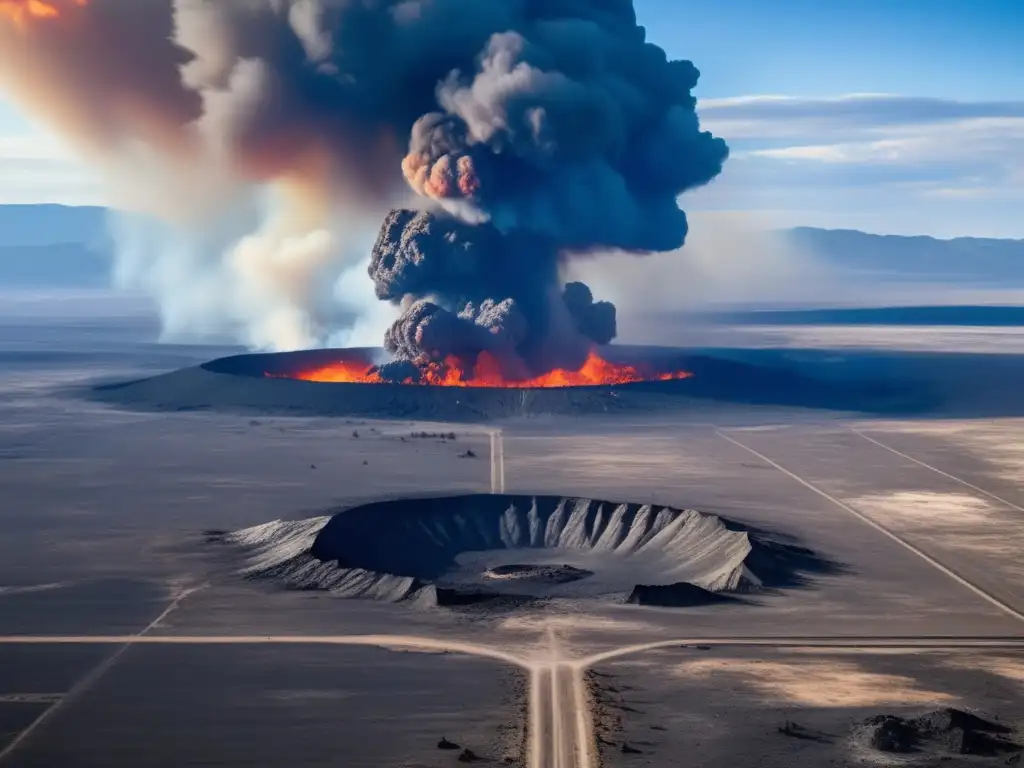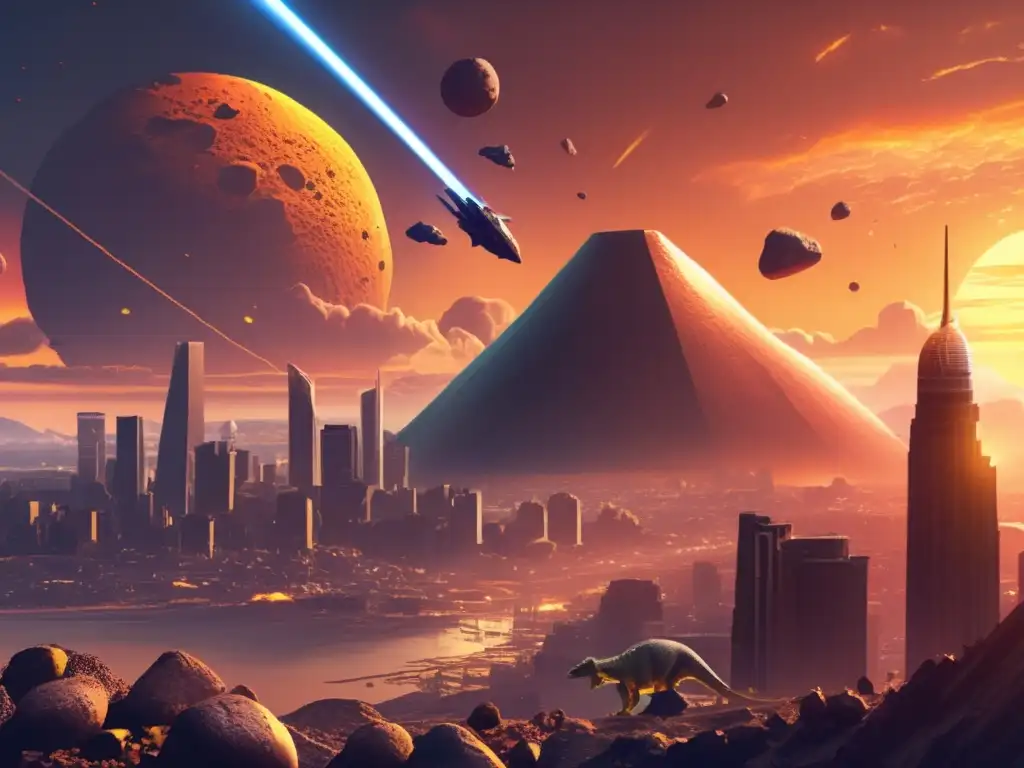The Sky Is Falling: The Asteroid Theory Of Dinosaur Extinction

Introduction
The extinction of the dinosaurs has puzzled scientists for decades. For a long time, it was believed that the cause of their extinction was climate change and volcanic activity. However, a new theory emerged that suggests that an asteroid impact could have been the cause of this catastrophic event. In this article, we will examine the asteroid theory of dinosaur extinction in detail.
The Basics of Asteroid Impacts

What is an Asteroid?
An asteroid is a small rocky object that orbits the sun. Most asteroids are found in the asteroid belt, which is located between Mars and Jupiter. However, some asteroids can have orbits that cross Earth's orbit.
What is an Asteroid Impact?
An asteroid impact occurs when an asteroid collides with a planet or moon. The impact can cause significant damage to the surface of the planet or moon, and can also trigger earthquakes, tsunamis, and volcanic activity. Large asteroid impacts can also change the climate of the impacted planet or moon.
How Often Do Asteroids Impact Earth?
Asteroid impacts on Earth are relatively rare, but they do happen. Small asteroids (less than 10 meters) impact Earth about once every year. Larger asteroids (100 meters or more) impact Earth much less frequently, but their impact can be devastating. The chances of a catastrophic asteroid impact are low, but the consequences could be severe.
The Asteroid Theory of Dinosaur Extinction

What is the Asteroid Theory of Dinosaur Extinction?
The asteroid theory of dinosaur extinction suggests that an asteroid impact caused the mass extinction of the dinosaurs. The impact would have caused a massive dust cloud that blocked out the sun, leading to a global cooling effect. This cooling effect would have caused significant changes in the climate, which would have had a catastrophic impact on the dinosaurs and other species.
What Evidence Supports the Asteroid Theory of Dinosaur Extinction?
The evidence for the asteroid theory of dinosaur extinction comes from multiple sources. One of the most significant pieces of evidence is the discovery of a thin layer of sediment that contains high levels of iridium. Iridium is rare in Earth's crust, but it is abundant in asteroids. The high levels of iridium in this layer suggest that an asteroid impacted Earth around the time of the dinosaur extinction.
Other evidence for the asteroid theory of dinosaur extinction includes the discovery of shocked quartz crystals, which can only be formed by extreme pressure, and the discovery of impact craters that are approximately the same age as the dinosaur extinction.
What Happened After the Asteroid Impact?

What Was the Immediate Effect of the Asteroid Impact?
The immediate effect of the asteroid impact would have been a massive explosion and shock wave. The asteroid would have released the energy equivalent of billions of atomic bombs, causing widespread destruction in the impact area.
What Happened to the Climate After the Asteroid Impact?
The asteroid impact would have caused a massive dust cloud that would have blocked out the sun for months or even years. This would have caused a significant cooling effect, leading to a rapid drop in temperature. The drop in temperature would have had a devastating impact on the dinosaurs and other species, causing widespread death and extinction.
How Did the Asteroid Impact Affect Evolution?
The asteroid impact had a significant impact on evolution. It wiped out the dinosaurs and many other species, creating an ecological vacuum that was filled by new species. It is believed that mammals were able to thrive after the extinction of the dinosaurs because they were small and could survive in the changed environment.
Frequently Asked Questions

-
What caused the mass extinction of the dinosaurs?
The cause of the mass extinction of the dinosaurs is still a topic of debate among scientists. However, the asteroid theory of dinosaur extinction suggests that an asteroid impact was the cause.
-
How big was the asteroid that caused the dinosaur extinction?
The asteroid that caused the dinosaur extinction was estimated to be between 10 and 15 kilometers in diameter.
-
How did the asteroid impact affect the climate?
The asteroid impact caused a massive dust cloud that blocked out the sun, leading to a significant cooling effect. This cooling effect had a catastrophic impact on the dinosaurs and other species.
-
What happened after the asteroid impact?
The asteroid impact caused widespread destruction and resulted in the extinction of the dinosaurs and many other species. The impact also created an ecological vacuum that was filled by new species, leading to significant changes in evolution.
-
Can an asteroid impact Earth again?
Yes, asteroid impacts on Earth are possible. However, the chances of a catastrophic asteroid impact are low.
Conclusion
The asteroid theory of dinosaur extinction suggests that an asteroid impact caused the mass extinction of the dinosaurs. While there is still debate over the exact cause of the extinction, the evidence for the asteroid theory is compelling. The impact would have had a catastrophic impact on the climate and evolution, leading to significant changes in the history of life on Earth.
It is essential that we continue to study asteroids and monitor their movements to ensure that we are prepared in the event of an asteroid impact. By learning from the past, we can work to prevent the catastrophic consequences of a future impact.
Additional Resources

For more information on asteroids and asteroid impacts, please visit the following resources:
 Crater Of Extinction: The Asteroid That Silenced Dinosaurs
Crater Of Extinction: The Asteroid That Silenced Dinosaurs End Of An Era: The Role Of Asteroids In Dinosaur Extinction
End Of An Era: The Role Of Asteroids In Dinosaur Extinction The Dinosaurs' Doomsday: The Asteroid Hypothesis
The Dinosaurs' Doomsday: The Asteroid HypothesisIf you want to discover more articles similar to The Sky Is Falling: The Asteroid Theory Of Dinosaur Extinction, you can visit the Asteroids and Dinosaurs category.
Leave a Reply

Articulos relacionados: